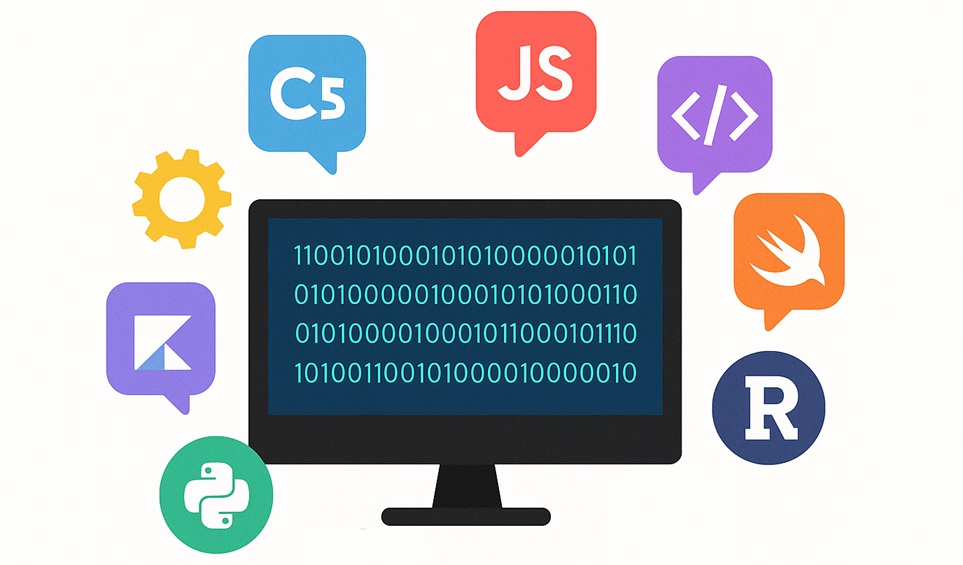For any logistics company managing a fleet of trucks, efficiency is everything. Routes must be planned, drivers dispatched, deliveries tracked, invoices issued, and compliance managed - often across multiple regions, regulations, and client requirements. That is the role of a Transportation Management System (TMS): to be the central brain of your trucking operation.
A well-implemented TMS reduces fuel costs, eliminates paperwork errors, and creates real-time visibility across the fleet. With GPS tracking, optimized dispatching, and data-driven route planning, companies can increase asset utilization while keeping customers satisfied with transparent delivery updates.
But here’s the real challenge: not all TMS platforms are created equal. Depending on your budget, scale, and operational complexity, you generally face three options:
- SaaS TMS – subscription-based, quick to deploy.
- Licensed On-Premise TMS – older model, where you buy and install software at your own facilities.
- Custom (In-House) TMS – built around your specific business logic and integrated into your ecosystem.
Each comes with trade-offs. For small operators, SaaS often looks attractive. But for serious trucking businesses managing dozens or hundreds of vehicles, relying on generic, rented software creates hidden costs and long-term risks. At TwinCore, we’ve seen this pattern repeatedly: companies that scale beyond the limits of boxed software eventually realize the competitive edge lies in building their own TMS.
SaaS TMS: The Quick Start That Turns Expensive
Most logistics managers are first introduced to SaaS TMS platforms. Vendors like Project44, FourKites, Oracle, or SAP advertise easy onboarding: sign up, connect carriers, and within days you can track shipments. For smaller teams or seasonal operators, this is often enough.
The strengths of SaaS are clear:
- Fast implementation. No need for servers, just pay monthly and go live.
- Continuous vendor updates. You benefit from new features automatically.
- Lower initial cost. You avoid upfront development expenses.
But for companies running 50, 100, or 200+ trucks, the weaknesses start to surface:
- Sensitive data stored externally. Customer contracts, freight rates, fleet positions - all live on external servers you don’t control. For enterprises with compliance obligations, this is a red flag.
- Per-truck, per-user, per-shipment billing. At small scale, SaaS looks affordable. But at trucking enterprise scale, subscription costs climb into hundreds of thousands annually.
- No asset value. With SaaS, you’re renting. Stop paying, and access disappears. There’s no intellectual property or system asset on your balance sheet.
- Built for the average operator. SaaS products are designed for broad markets. They rarely cover niche workflows such as hazardous cargo, oversized freight, or refrigerated loads with IoT sensors.
- Vendor lock-in. Exporting data can be painful, APIs are often limited, and migrating away is costly.
- Innovation bottleneck. Features are released according to the vendor’s roadmap, not your priorities. If you need faster adaptation - for example, integrating with a new telematics API - you wait in line.
This model may suit startups or small logistics firms. But as soon as your fleet grows, SaaS TMS turns into a liability rather than an advantage.
Licensed On-Premise TMS: Yesterday’s Model
The older alternative to SaaS is buying a license and installing TMS software on your company’s own servers. A decade ago, this was the standard approach.
In theory, it gives you ownership. In practice, licensed solutions are often:
- Slow and buggy. Legacy interfaces frustrate users and delay operations.
- Complex to maintain. On-premise installations require internal IT teams to handle updates, patches, and hardware.
- Rigid. Features are difficult to extend, and customization is limited.
Many logistics companies who tried this model discovered that on-premise software added complexity rather than solving it. That is why modern enterprises increasingly skip licensed products altogether, moving directly from SaaS to in-house solutions.
In-House TMS: Control, Scalability, and Long-Term ROI
For logistics businesses running serious trucking operations, the smarter option is building your own TMS, either fully in-house or with a specialized partner like TwinCore.
Why do enterprises choose custom TMS despite higher upfront costs? Because over time, the economics and competitive benefits are unmatched:
Built Around Your Business Logic
Every trucking company has unique flows:
- Dispatch rules that balance driver availability, truck type, and cargo requirements.
- Route optimization with regional regulations, tolls, and fuel constraints.
- Client-specific tariffs, surcharges, and compliance rules.
A custom TMS encodes these directly into your system. No compromises, no workarounds, no bending your processes to fit someone else’s template.
Support for Non-Standard Cargo
If your company handles hazardous materials, oversized freight, or temperature-controlled cargo with sensors, SaaS systems rarely offer sufficient flexibility. A custom TMS lets you:
- Track sensor data in real-time.
- Build safety workflows into dispatch.
- Ensure compliance with regional and international transport laws.
CRM-Like Features for Your Clients
Modern logistics is not just about dispatching trucks. Clients expect visibility, self-service, and transparent communication. With a custom TMS you can:
- Create customer portals for self-booking shipments.
- Offer white-label platforms to partners.
- Build custom reporting dashboards aligned with client contracts.
Deep Integrations Across Your Ecosystem
Trucking operations touch many systems: ERP for billing, WMS for warehouses, telematics for vehicles, IoT for cargo sensors, accounting for invoices. A custom TMS integrates seamlessly with each of these - without the fragile middleware stacks that SaaS platforms rely on.
Lower Marginal Cost Over Time
Yes, the initial investment in custom development is higher. But over a 5-year horizon, it pays back. Why?
- You avoid endless subscription fees.
- Scaling from 50 trucks to 500 doesn’t multiply license costs.
- Enhancements go into your asset, not someone else’s product.
As one of our enterprise clients discovered, what they used to spend annually on SaaS fees was enough to cover development of their own TMS in just two years.
The Hidden Costs of SaaS TMS Platforms
Subscription-based TMS products dominate the market. Project44, FourKites, Oracle, SAP, and dozens of others fight for logos by promising “all-in-one” visibility and fast onboarding. What doesn’t show up on the landing pages are the quiet constraints that surface once you scale.
Limited Flexibility
Most SaaS TMSs force your workflows into their pre-built logic. Need multi-leg shipments across regions with different customs rules? You wait for a feature release. Want to experiment with new pricing or routing algorithms? Unless it’s on the vendor roadmap, it doesn’t exist.
In practice, this means you wait for the vendor to release a feature that you urgently need. In our company, we had a client in Eastern Europe who couldn’t adjust regional tariff rules in time because the SaaS roadmap pushed the update six months out. We built a custom module in their own TMS in just four weeks. That kind of agility makes the difference between capturing revenue and missing the window.
Expensive Integrations
Modern logistics requires systems to talk - CRM, ERP, WMS, accounting, IoT, EDI, carrier APIs. With SaaS platforms, integration either isn’t supported, or it’s sold as an “enterprise add-on” with premium pricing. Companies end up spending as much on middleware as on the TMS itself.
We usually see SaaS vendors selling integrations as premium add-ons. For example, connecting ERP + TMS + IoT sensors can cost a business $50–100k per year just in middleware. That spend creates no added value - it’s just a patch for incompatibility. With a custom TMS, integrations are designed around your business processes from the start, so there’s no endless “integration tax.”
Vendor Lock-In
Growth means bigger invoices, not more ownership. Every new shipment, every additional user, every API call raises the monthly bill. Five years in, you’ve spent millions on software you’ll never own, and your business still bends to someone else’s product roadmap.
Growth in SaaS always means a bigger bill. More shipments, more users, more API calls - all of it multiplies your subscription. In our company, we’ve seen logistics operators spend over $1M in five years on SaaS licenses and still struggle with limited control. Worse, vendor updates sometimes broke critical integrations, and the SLA didn’t reflect the urgency of their operations. With custom development, you invest once and own your system outright.
Slower Adaptation
SaaS vendors build for the median client. If your operations are niche, regulated, or more advanced than average, you’re waiting in line for features that may never arrive. In fast-moving logistics markets, those delays cost real margin.
We built a TMS for a pharma client where every shipment required both GPS tracking and temperature monitoring. Their SaaS vendor couldn’t deliver these features - and wasn’t planning to. We implemented them in the first release of their custom system, giving them a competitive advantage. These cases show that a TMS should adapt to your business logic, not the other way around.
The Implementation Path: From SaaS to Custom
No logistics company wakes up one morning and builds an in-house TMS from scratch. The smart journey usually looks like this:
- Start with SaaS
For small fleets or companies just beginning their digital transformation, SaaS provides a quick way to digitize operations. Dispatchers stop juggling spreadsheets, GPS tracking becomes standardized, and managers get dashboards that reveal basic performance trends. This stage builds immediate ROI and helps staff adapt to structured digital workflows. - Identify Pain Points and Gaps
As shipment volume grows, cracks appear. Dispatchers waste time bending SaaS workflows to fit reality. Integrations with ERP or telematics require costly middleware. Billing reports don’t match customer contract formats. These pain points are valuable because they reveal exactly where SaaS stops serving your needs. - Gradually Build Custom Modules
Instead of replacing SaaS overnight, smart companies layer custom modules on top. For example: - A dispatch optimization engine tailored for regional rules and fuel efficiency.
- A customer portal that lets clients self-book shipments and track progress.
- APIs that connect directly to your ERP and IoT sensors, bypassing SaaS limits.
- This hybrid phase delivers quick wins while preparing your team for full control.
- Transition to Full Custom TMS
Once scale and budget justify, companies retire SaaS and move to a dedicated in-house TMS. The transition is smoother because the team already understands the workflows, and the custom modules are battle-tested. The end result: a system that reflects your business DNA instead of constraining it.
Cloud vs On-Premises: Busting the Infrastructure Myth
A common objection to custom TMS is: “We don’t want to maintain servers or data centers.” The truth is, you don’t have to.
Modern in-house TMS solutions can be deployed entirely in the cloud:
- Microsoft Azure, AWS, or Google Cloud provide elastic infrastructure without capital expenditure.
- Containers and microservices architectures allow scaling specific components (like route optimization) independently.
- Security standards (TLS 1.2+, data-at-rest encryption, SOC 2 compliance) can be enforced from day one.
At TwinCore, we design TMS platforms that blend the benefits of custom software with the scalability of the cloud. This means you gain ownership of your logic and data while avoiding the headache of physical infrastructure.
SaaS TMS: The Real Risks That Trucking Companies Overlook
Let’s underline the real costs and risks of relying long-term on SaaS:
- Data residency concerns. If your contracts demand EU-only storage or stricter compliance, SaaS can put you in breach.
- Exponential pricing. With per-truck or per-shipment billing, what seems affordable at 10 trucks becomes unsustainable at 200.
- Vendor dependency. You depend on their uptime, their incident response, their export formats. Switching later is expensive and messy.
- Generic workflows. Your unique operational advantages - like how you handle special cargo or optimize last-mile delivery - get lost because SaaS pushes you into “average” processes.
- No long-term value. Every subscription fee is rent. You never build an asset.
For trucking enterprises, these issues aren’t theoretical. They directly impact margins, compliance, and competitiveness.
In-House TMS: Advantages That Matter at Scale
By contrast, in-house TMS development creates lasting advantages for serious trucking operations:
- Full ownership. You control the roadmap, security policies, and integration depth.
- Custom-tailored workflows. Dispatch, tariffs, compliance checks - all designed for your business logic.
- Scalable costs. Higher upfront investment, but no runaway subscriptions. Over time, unit costs decline.
- Customer-facing value. White-label platforms, flexible reporting, and self-service tools become part of your offering.
- Enterprise valuation. Unlike SaaS, custom TMS is an asset that increases company valuation during acquisition, IPO, or generational transfer.
In practice, this means your TMS becomes a competitive moat - something no SaaS license can replicate.
Case Scenarios Where Custom TMS Wins
To make this concrete, let’s look at common trucking scenarios where SaaS simply cannot compete:
- Hazardous Cargo Operations
A fleet transporting chemicals or explosives must comply with strict regulations, driver certifications, and sensor-based monitoring. SaaS rarely supports such niche compliance out of the box. Custom TMS embeds these rules directly into dispatch logic. - Refrigerated and IoT-Tracked Loads
Temperature-sensitive shipments require integration with IoT sensors for real-time alerts. With SaaS, you wait for vendors to add support. With custom, integration is immediate. - High-Volume, Multi-Region Operations
If you’re expanding across borders, you need dynamic tariffs, multi-currency invoicing, and region-specific compliance workflows. Custom systems adapt quickly, SaaS drags. - Client-Facing Platforms
Large customers increasingly expect portals to book, track, and report on shipments themselves. SaaS platforms offer basic portals, but they’re one-size-fits-all. A custom TMS lets you offer branded, differentiated client experiences.
How TwinCore Helps Logistics Companies Build the Right TMS
At TwinCore, we’ve worked with logistics providers across Europe and North America to design and build TMS solutions that balance immediate ROI with long-term control.
Our approach:
- MVP First. We help companies launch a minimum viable product that solves the most painful bottlenecks - whether that’s dispatch, invoicing, or customer visibility.
- Parallel Operation. You don’t have to rip and replace SaaS overnight. We design custom modules that run alongside your existing system until you’re ready to transition.
- Cloud-Native Architecture. Our solutions are deployed in Microsoft Azure or AWS, leveraging containerization for scalability and resilience.
- Full Ecosystem Integration. We connect directly with ERP, CRM, WMS, accounting, telematics, and IoT - eliminating middleware bloat.
- Long-Term Partnership. Beyond delivery, we provide continuous improvement, optimization, and support - ensuring your TMS evolves with your business.
We know the trucking world is unforgiving. Margins are tight, competition is fierce, and compliance is relentless. That’s why our philosophy is simple: logistics software must be an asset, not a liability.
Conclusion: Control Defines Your Logistics Future
Transportation Management Systems are not optional. They are the engine room of modern trucking companies. But the choice of engine matters.
- SaaS TMS is a quick start, good for small fleets and early-stage operators.
- Licensed on-premise TMS is outdated - slow, buggy, and rigid.
- Custom TMS is the long-term play for enterprises with scale, complexity, and ambition.
If your business runs on trucks, routes, and contracts, the question is not whether you need a TMS - but whether you want to keep renting average workflows, or own a system designed around your DNA.
At TwinCore, we’ve seen firsthand how custom TMS solutions transform trucking operations into scalable, data-driven businesses. Whether you’re moving hazardous freight, refrigerated loads, or simply running a high-volume fleet, we can help you build the platform that secures your future.

 LinkedIn
LinkedIn
 Twitter
Twitter
 Facebook
Facebook
 Youtube
Youtube







